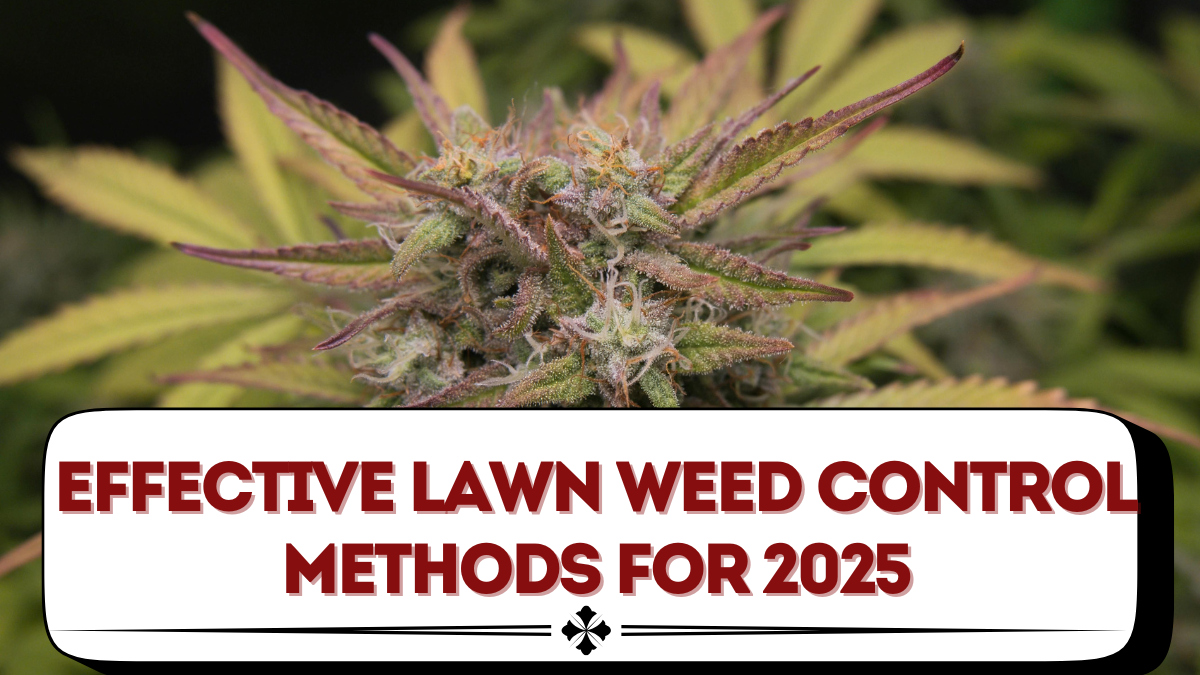A lush green lawn is the pride of any home, but weeds can quickly ruin the picture. Dandelions, crabgrass, and clover thrive when lawns are weak, competing for nutrients, water, and sunlight. In 2025, new products, techniques, and eco-friendly alternatives are making lawn weed control more effective and sustainable than ever.
This guide will cover chemical and natural weed control methods, prevention strategies, and the latest innovations that keep lawns healthy while reducing reliance on harsh herbicides.

Why Weed Control Is Essential
Weeds aren’t just an aesthetic issue. Left unchecked, they can:
-
Steal nutrients from grass roots.
-
Create bare patches where pests and disease thrive.
-
Spread aggressively and choke out healthy turf.
-
Lower curb appeal and property value.
Consistent weed control helps maintain a dense, healthy lawn that resists invasion naturally.
Common Lawn Weeds in 2025
1. Crabgrass – A fast-growing annual weed that spreads in warm months.
2. Dandelions – Recognizable yellow flowers with deep taproots that are hard to remove.
3. Clover – Beneficial in some cases but often considered undesirable in uniform lawns.
4. Chickweed – Spreads quickly in shaded, moist areas.
5. Nutsedge – Looks like grass but grows taller and faster, making lawns uneven.
Identifying weeds correctly is the first step toward choosing the right treatment.
Lawn Weed Control Methods
Chemical Herbicides
Herbicides remain a powerful option for weed control in 2025, though modern formulas are safer and more targeted.
-
Pre-Emergent Herbicides – Stop weeds before they sprout, especially effective against crabgrass.
-
Post-Emergent Herbicides – Kill existing weeds like dandelions and clover without harming grass.
-
Selective Herbicides – Target weeds while sparing grass.
-
Non-Selective Herbicides – Kill all plants, used only for spot treatments.
Natural and Eco-Friendly Methods
Growing concern about chemical use has led to natural alternatives gaining popularity:
-
Vinegar and Salt Sprays – Work for small patches but should be used cautiously.
-
Corn Gluten Meal – Serves as a natural pre-emergent weed preventer.
-
Boiling Water – A quick fix for weeds growing in driveways and edges.
-
Hand Pulling – Still effective, especially with deep-rooted weeds like dandelions.
Lawn Health as Weed Prevention
The best defense against weeds is a healthy lawn. Preventive practices include:
-
Mowing at the right height to shade out weed seeds.
-
Overseeding thin areas to maintain grass density.
-
Proper watering to encourage deep root systems.
-
Soil aeration to improve nutrient flow and grass growth.
Comparison: Chemical vs Natural Weed Control
| Method | Pros | Cons | Best Use |
|---|---|---|---|
| Chemical Herbicides | Fast, effective, long-lasting | Can harm environment, costly | Large lawns with severe weed issues |
| Natural Methods | Eco-friendly, safe for kids & pets | Less effective, frequent reapplication | Small lawns, light infestations |
| Lawn Care Practices | Preventive, sustainable | Requires consistency | All lawns as a long-term solution |
Innovations in Weed Control 2025
-
Smart Sprayers – AI-driven devices that detect weeds and apply minimal herbicide.
-
Biological Control – Research into microbes and insects that target specific weeds.
-
Robotic Weed Pullers – Small robots that identify and remove weeds mechanically.
-
Organic Herbicides – Plant-based solutions offering eco-safe alternatives.
Tips for Effective Weed Management
-
Always apply pre-emergents in early spring before weeds germinate.
-
Use post-emergents on young, actively growing weeds.
-
Avoid mowing right after herbicide application.
-
Mulch flower beds and edges to block sunlight for weed seeds.
-
Test soil regularly—healthy soil supports strong grass growth that naturally resists weeds.
FAQs
What is the most effective weed killer for lawns?
Selective post-emergent herbicides are highly effective for common lawn weeds like dandelions and clover.
Can I control weeds without chemicals?
Yes, natural options like corn gluten meal, vinegar sprays, and hand pulling can work, especially for small lawns.
When is the best time to apply pre-emergent herbicides?
Apply in early spring before soil temperatures reach 55°F, which is when weed seeds start germinating.
Do weeds come back after removal?
Yes, if root systems or seeds remain. Consistent lawn care is required to prevent regrowth.
Are eco-friendly weed control methods effective?
They can be, but they require more frequent application and patience compared to chemical herbicides.
Conclusion
Weeds are inevitable, but with the right strategies, you can stop them from taking over your lawn. In 2025, lawn weed control is about combining smart herbicides, eco-friendly alternatives, and healthy lawn practices. Whether you prefer chemicals for quick results or natural methods for sustainability, the key lies in consistent care and preventive maintenance. A dense, thriving lawn is the best long-term defense against weeds—and the path to a yard you can be proud of.
Click here to know more.
